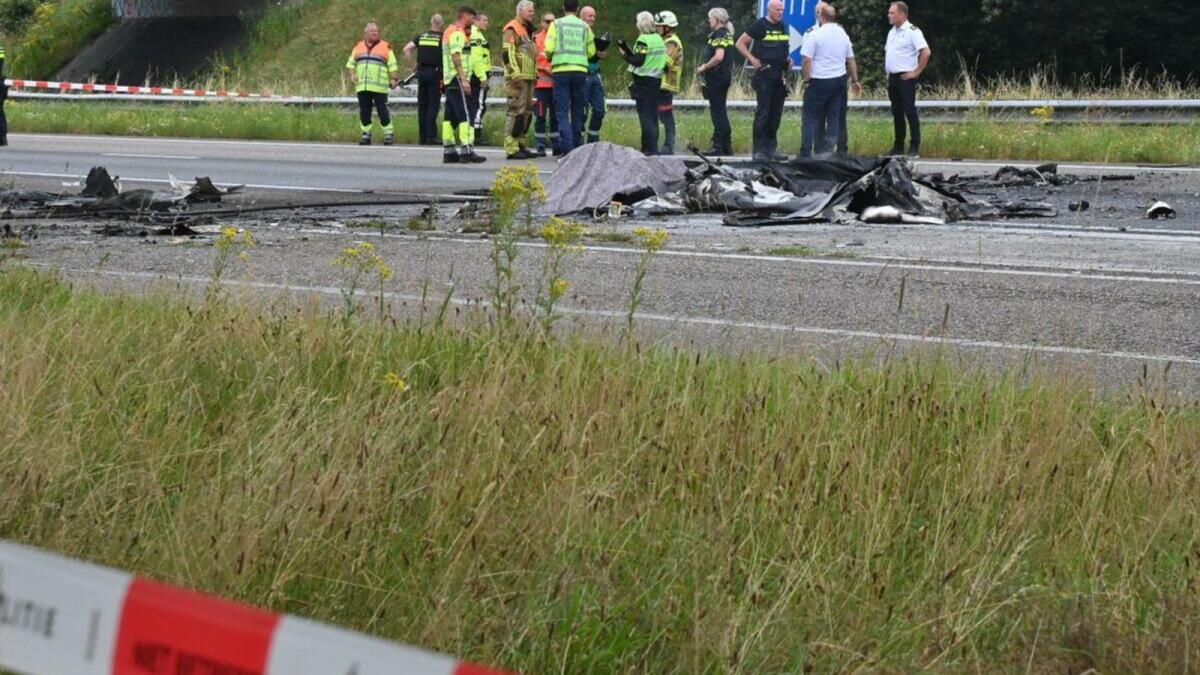On a highway near the southern city of Breda in the Netherlands, a small plane crashed, resulting in the tragic death of the pilot. The incident occurred around 12.45 pm, with debris scattered across the double-lane road. The Middle-West Brabant Safety Region confirmed the crash on the A58 highway, leading towards Roosendaal, with no other passengers on board. Unfortunately, the pilot was the sole occupant of the plane and did not survive the crash. The type of aircraft involved was not disclosed, but images shared on social media showed a burned-out wreck on the highway, subsequently blocked off by emergency services.
The wreckage on the highway displayed the logo of a local aviation flight school, indicating a potential training flight gone wrong. Witnesses described seeing the plane descending rapidly before the crash, followed by a ball of fire upon impact. The tragic incident resulted in the closure of the highway for the rest of the day, as emergency services cleared the area and investigated the cause of the crash. While the details of the accident are still under investigation, this serves as a reminder of the inherent risks associated with aviation, even in training scenarios.
This recent plane crash in the Netherlands is a stark reminder of previous aviation tragedies in the country. In 2009, a Turkish Airlines passenger jet crashed near Schiphol airport, resulting in nine fatalities and over 80 injuries. Investigators attributed the cause of the crash to a faulty altimeter, highlighting the importance of meticulous maintenance and safety checks in aviation. Additionally, in 1992, a devastating incident occurred when an Israeli El Al Boeing 747 crashed into an apartment block in Amsterdam shortly after take-off from Schiphol, claiming the lives of 43 individuals. These past tragedies emphasize the importance of stringent safety protocols and regulatory oversight in the aviation industry.
The safety of air travel remains a critical concern globally, with accidents serving as sobering reminders of the potential risks involved. The Netherlands, known for its efficient aviation infrastructure, has witnessed its share of tragic incidents over the years. The recent small plane crash near Breda raises questions about the training practices and safety measures in place for aspiring pilots. As authorities investigate the circumstances surrounding the crash, the aviation community will likely scrutinize the incident to prevent similar occurrences in the future.
Despite advancements in aviation technology and safety standards, unforeseen accidents like the one near Breda serve as a somber reality check for the industry. As the aviation sector continues to evolve and expand, ensuring the highest levels of safety and training for pilots is paramount. While the cause of the recent crash remains unknown, it underscores the need for continuous vigilance and adherence to safety protocols in all aspects of aviation operations. With the highway blocked off and investigations ongoing, the local community and aviation authorities are grappling with the aftermath of this tragic event.
In conclusion, the small plane crash near Breda, Netherlands, has cast a shadow over the local community and highlighted the inherent risks associated with aviation. As emergency services work to clear the wreckage and investigate the cause of the crash, the incident serves as a sobering reminder of past aviation tragedies in the country. With safety remaining a top priority in the aviation industry, this unfortunate event underscores the need for stringent safety protocols and continuous training to prevent future accidents. As the aviation community mourns the loss of the pilot and reflects on the lessons learned from this incident, the focus remains on enhancing safety measures to ensure the integrity of air travel for all.









